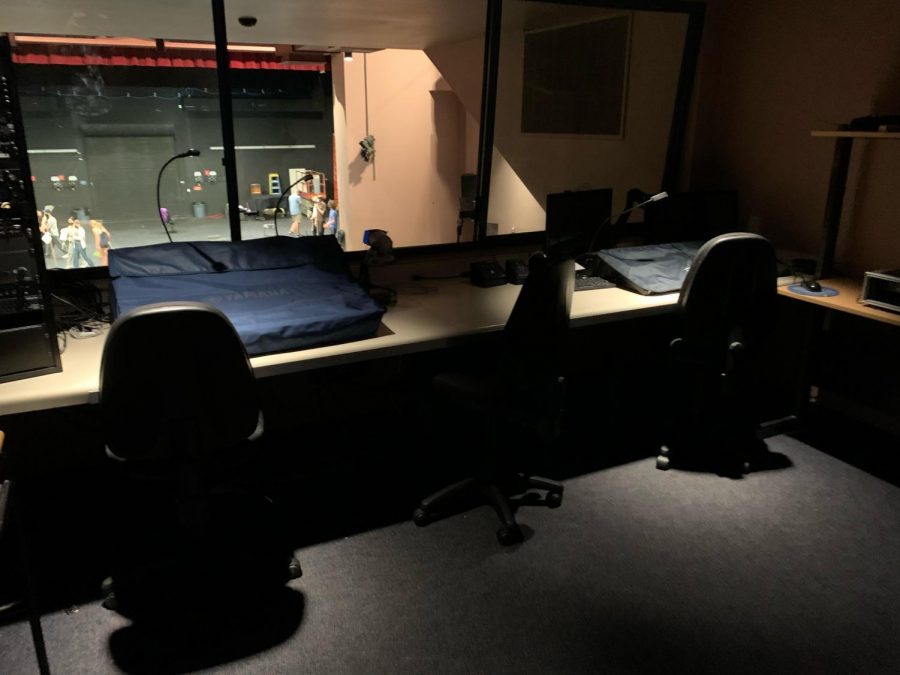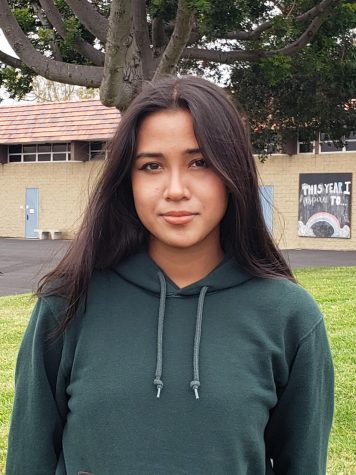Behind the Scenes of UHS Theatre
A shot of the stage light control room in the theatre.
October 22, 2021
If you go to UHS you probably know that we have an award winning theatre program. Every year we put on two major productions filled with talented actors and technicians. The actual performance always tends to garner attention from the student body. But within this program, there is so much that does not meet the eye. So in these great shows, what does the early creative process look like for top designers and management?
The selection of the show comes from the mastermind of theatre, director Ranae Bettger, weeks or even months before the show title is released. Once students find out what the show is going to be, their individual creative process can really begin. Senior Yannik Cadin, the stage manager for this year’s shows, leads management for the technicians for the shows and is there from the very start.
“The first thing I do is read the script, this is to make sure that I enjoy the material and to make sure that I would be proud of what I may work on. Following this, I prepare a design to pitch to the Director (Miss Ranae Bettger)” Cadin said.
For most of the shows under Miss Ranae Bettger, the actors are casted after the show is announced and the crew and designers are cast last. In the time between the cast and crew being casted, prospective designers work on their pitches for Miss Bettger keeping in mind the show material and presented cast.
“[During this time] I am responsible for promoting, but also preparing and presenting an interest meeting for any crew members,” Cadin said. As stage manager, Cadin manages these responsibilities on top of working on a design pitch and running rehearsals with cast members.
While dozens of elements have to come together to make a show happen, a few of the main production values of technical theatre are marketing and publicity, hair and makeup, costumes, audio, lighting, management, props, sets and special effects.
The marketing and publicity department is responsible for designing graphics and pamphlets that help promote the show. They also sometimes create designs that are published on social media, to attract potential members and viewers.
Hair and makeup work directly with actors to bring a vision to life, physically transforming actors into environments of their characters by sculpting their faces and hair or simply enhancing their features. Costume design often begins with dramaturgy and an analysis of the script and lends itself into sketching, pattern drafting, pulling of older costumes, composing and fitting. At times, the costume crew makes items from scratch pulling out bolts of fabric and sewing machines in addition to the premade pieces.
Audio concerns everything you hear in a show from Miss Bettger’s announcement before the opening show to the mixing of different actors’ voices. Lighting is also a very technically involved aspect of theatre that deals with a huge array of lights and programs to make sure you can see the actors and all the aspects the other crew members have created.
Prop designers design everything actors hold or manipulate and work closely with the set designers to make sure all the moving pieces in the show work well together. Special effects and tech is an incredibly special department of theatre that adds the “magic” to a show.
Akemi Nishida, a senior member of the costume crew for Uni Theatre Arts has her own process when it comes to designing shows.
“The first thing I do when hearing about a new show is research! I’ll start by reading the plot synopsis and learning a little about the creators. Afterwards, I move into more specific research regarding the characters that I want to pitch costumes for,” Nishida said. “The main idea is just to get familiar with the show.”
Like Cadin, the bulk of her work begins in the early stages with brainstorming and collaboration.
“It’s important to start on the same page, and these group conversations set the foundation for good communication and teamwork,” Nishida said. “We also receive feedback on our initial designs, and from there we’ll revise.”
After the casting process for designers is over, the ball starts rolling as the designers try to fulfill their visions with the limits of high school theatre.
“The first step of the design process for any show is thinking without limits. One of the best things to do is to let your imagination go wild, think of the most extravagant things,” Cadin said. “Then realize the idea by narrowing down on key details that make the design enjoyable.”
UHS’s upcoming fall play will open in November. Make sure to keep an eye out for all the details and designs our Technical Theatre crew work so hard to prefect!





